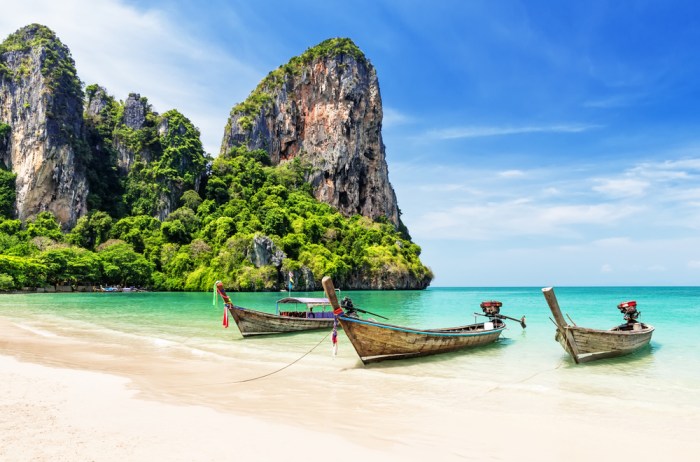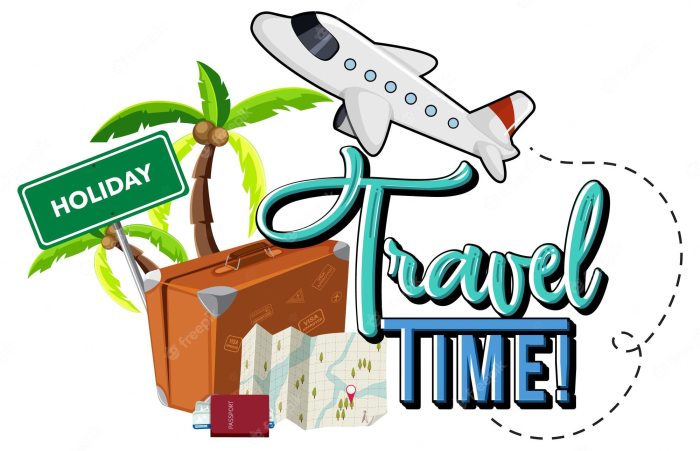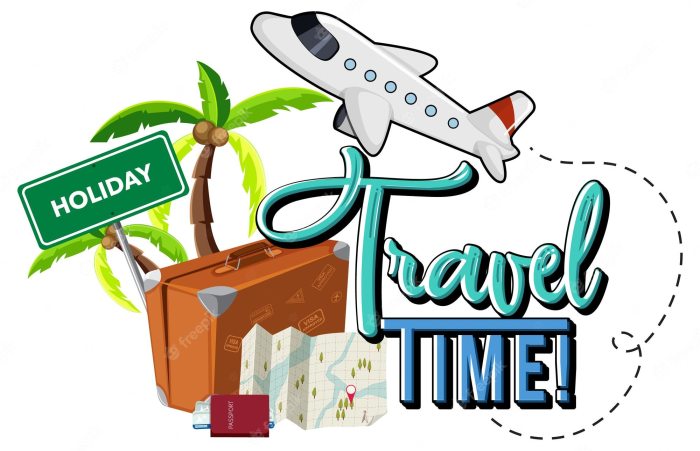Travel to covid hotspots presents a complex web of challenges and considerations. This guide delves into the intricacies of navigating potential risks, evaluating your travel decisions, and ultimately making informed choices about your journeys. From understanding the concept of a covid hotspot to exploring alternative destinations, we’ll cover everything you need to know to plan a safe and fulfilling trip, even in areas experiencing high infection rates.
We’ll explore the factors contributing to a location being designated a hotspot, examine the potential risks, and discuss various levels of severity. Then, we’ll delve into evaluating your travel decisions, considering health advisories, comparing destinations, and assessing your personal risk tolerance. We’ll also address the impact on travel plans, including potential cancellations and delays, as well as travel restrictions and insurance options.
Understanding the Concept
Traveling to areas experiencing high COVID-19 transmission rates requires careful consideration. “COVID hotspots” are geographic locations where the virus spreads rapidly and significantly, impacting public health. Understanding the factors behind their designation and the associated risks is crucial for informed travel decisions.COVID hotspots are defined by high rates of confirmed COVID-19 cases, often coupled with high positivity rates and significant hospitalizations within a specific area over a defined period.
This concentrated spread necessitates careful evaluation before planning travel to such regions.
Factors Contributing to COVID Hotspot Designation
Factors that contribute to a location being designated a COVID hotspot include:
- High case counts: A significant increase in confirmed COVID-19 cases within a specific timeframe, compared to historical or national averages, is a primary indicator. This data often comes from official health agency reports.
- High positivity rates: A substantial proportion of COVID-19 tests returning positive in a region suggests widespread transmission. This is often linked to high case counts and community spread.
- Increased hospitalizations: A rise in COVID-19 patients requiring hospitalization indicates the severity of the outbreak and the strain on healthcare resources. This factor often correlates with severe illness and potential mortality rates.
- Community spread: The absence of clear sources of infection, like outbreaks in specific settings, suggests broader community transmission, potentially affecting a wider population.
- Strain on healthcare systems: An overwhelming burden on local healthcare facilities, marked by limited intensive care unit beds, staff shortages, or significant delays in patient care, suggests a serious outbreak that necessitates the designation as a hotspot.
Potential Risks Associated with Traveling to a COVID Hotspot
Traveling to a COVID hotspot involves several potential risks, including:
- Increased chance of infection: High transmission rates in hotspots significantly increase the risk of contracting COVID-19. This risk is higher for individuals who are unvaccinated or have underlying health conditions.
- Exposure to evolving variants: Hotspots often become breeding grounds for new or more transmissible COVID-19 variants. These variants can present different levels of severity and require tailored responses.
- Limited access to healthcare: Accessing appropriate medical care for COVID-19 symptoms in a hotspot may be challenging, especially if local healthcare resources are strained. This may lead to delayed or inadequate treatment.
- Potential disruptions to travel plans: Travel advisories, lockdowns, or quarantines imposed due to outbreaks can disrupt travel plans and create unforeseen expenses.
Varying Levels of Severity in COVID Hotspots
COVID outbreaks in hotspots can vary considerably in severity. The factors mentioned above, along with factors such as population density, vaccination rates, and existing healthcare infrastructure, all influence the severity of the outbreak.
- Different outbreak characteristics: Outbreaks in densely populated urban areas can spread rapidly, leading to a higher overall number of cases compared to less densely populated rural regions.
- Impact on different demographics: COVID outbreaks can disproportionately impact specific demographics, such as the elderly or those with underlying health conditions. This demographic-specific impact influences the overall severity.
- Severity indicators: The severity of an outbreak in a hotspot can be measured by the rate of hospitalization, intensive care unit admissions, and mortality rates.
Evaluating Travel Decisions
Navigating the complexities of travel during a pandemic requires careful consideration. The landscape of global health advisories shifts constantly, making informed decisions crucial for personal safety and responsible travel. This section delves into the criteria for evaluating travel risks, highlighting the importance of staying updated on health advisories and providing a comparative look at current situations in different destinations.
Personal factors play a vital role in determining whether or not a trip to a COVID hotspot is right for you.
Criteria for Assessing Travel Risk
Evaluating the risk of travel to a COVID hotspot involves multiple factors. These factors must be weighed against individual circumstances and personal tolerance for risk. A comprehensive approach requires a nuanced understanding of the specific situation in the destination and personal preparedness.
- Current infection rates and trends in the destination. Understanding the trajectory of cases in a region is critical. Are infection rates rising, falling, or remaining stable? Reliable data sources, such as the World Health Organization (WHO) and local health authorities, provide crucial insights. For example, a region experiencing a surge in cases presents a significantly higher risk than one with consistently low numbers.
- Local vaccination rates and booster uptake. High vaccination rates often correlate with lower transmission rates and milder outcomes. A destination with a high percentage of its population fully vaccinated and boosted is generally considered to be at lower risk than one with lower vaccination rates. The effectiveness of the vaccination regime against specific variants also influences the assessment.
- Stringency of local health and safety measures. Are mask mandates in place? Are there restrictions on gatherings? Local regulations significantly impact the risk of transmission. The stricter the measures, the lower the risk, but the effectiveness of these measures is also a critical factor.
- Personal health status and vulnerability. Underlying health conditions and immune systems play a significant role. Individuals with compromised immune systems or underlying health conditions might need to carefully consider the risks involved in traveling to a COVID hotspot. This also includes the individual’s willingness to accept the risk and ability to cope with potential issues.
Importance of Health Advisories
Staying informed about official health advisories is paramount. These advisories provide up-to-date information on the specific situation in various destinations, offering critical insights for informed decision-making. Consult local health authorities and reputable international organizations for the most current and comprehensive recommendations.
- Government health agencies, such as the CDC in the United States or the NHS in the UK, provide essential travel guidance.
- International organizations, like the WHO, publish comprehensive global health updates and advisories.
- Local authorities in the destination provide critical insights into the local situation, such as restrictions or advisories.
Comparative Analysis of Destinations
Comparing the recent COVID-related situations in different destinations is essential for informed decision-making. Consider a comparison between regions with fluctuating case numbers and those experiencing a consistent decline in infection rates.
Traveling to COVID hotspots is a tricky business, isn’t it? The thought of potential exposure is enough to make anyone reconsider their travel plans. But, an interesting alternative to avoid those potential risks is something called “flights to nowhere covid”. These flights, like flights to nowhere covid , offer a way to experience the thrill of travel without actually going anywhere.
Ultimately, while “flights to nowhere covid” offer an interesting alternative, traveling to COVID hotspots still presents a range of challenges, from health concerns to potential travel restrictions.
| Destination | Recent COVID Situation | Risk Assessment |
|---|---|---|
| Country A | Experiencing a surge in cases, with increased hospitalizations. Mask mandates reinstated. | High |
| Country B | Stable, low infection rates, and high vaccination rates. Few restrictions in place. | Low |
| Country C | Declining cases, but still experiencing sporadic outbreaks. Vaccination rates remain moderate. | Moderate |
Personal Factors to Consider
Personal circumstances are crucial factors when evaluating the risk of travel.
- Pre-existing health conditions. Individuals with underlying health conditions or compromised immune systems may need to exercise heightened caution.
- Travel companions and their health status. If traveling with others, assess their health status and risk tolerance.
- Travel duration. Longer trips may increase exposure risk.
- Travel plans. The planned activities and destinations will influence the overall risk.
Impact on Travel Plans
Navigating the world of travel in the current climate requires a flexible approach. The ever-evolving nature of COVID-19 outbreaks, particularly in designated hotspots, necessitates a proactive understanding of potential disruptions to travel plans. This includes understanding the various travel restrictions that may be implemented, and how to adjust your itinerary in the face of uncertainty.The emergence of COVID-19 hotspots can significantly impact travel plans, leading to unexpected cancellations, delays, and adjustments to pre-existing itineraries.
Travelers need to be prepared for potential disruptions and have backup options in place to minimize the negative impact on their trips.
Potential Impacts on Itineraries
The emergence of COVID-19 hotspots can lead to a variety of disruptions in travel plans. These disruptions can range from minor inconveniences to major setbacks. Travelers need to anticipate potential issues and be prepared for adjustments.
- Cancellations: Airports, hotels, and other travel services may be forced to cancel bookings or operations due to a sudden increase in COVID-19 cases. For example, a sudden surge in cases in a popular tourist destination might lead to the cancellation of flights or the closure of hotels. This necessitates having contingency plans and alternative travel options.
- Delays: Travelers might experience delays in flights, train journeys, or other transportation modes. This could be due to airport or border control measures, as well as disruptions in transportation networks caused by the spread of the virus. Delays can lead to significant schedule changes and impact the overall travel experience.
- Changes in Itineraries: Travelers may need to alter their itineraries to avoid affected areas or adapt to new travel restrictions. This could involve adjusting the duration of a trip, changing accommodation locations, or postponing certain activities. For instance, if a key attraction in a COVID-19 hotspot closes, visitors might need to find alternative attractions.
Travel Restrictions and Regulations
Understanding the travel restrictions and regulations in place in both the origin and destination locations is paramount. These restrictions are dynamic and vary widely.
- Entry Requirements: Travelers might be required to provide proof of vaccination, recent negative COVID-19 tests, or undergo mandatory quarantine upon arrival. For example, some countries may require a negative PCR test within a specific timeframe before allowing entry.
- Movement Restrictions: Local governments may impose restrictions on movement within certain regions, limiting access to specific areas or attractions. This might include lockdowns or curfews.
- Testing Requirements: Travelers might need to undergo COVID-19 tests at specific points in their journey, such as upon arrival or departure. This could involve airport testing, hotel testing, or other testing protocols. Testing requirements can vary significantly between countries and regions.
Modifying or Postponing Travel Plans
Developing alternative travel plans or postponing travel is a crucial aspect of managing the impact of COVID-19 hotspots. This often involves evaluating the severity of the outbreak and considering potential risks.
- Flexibility is Key: Being flexible in your travel plans is essential. Travelers should have alternative destinations, dates, or activities readily available. This ensures the trip can be adapted in response to any unforeseen circumstances.
- Postponement Options: Postponing travel can be an option, especially if the situation is uncertain. This can provide a period of observation before resuming the trip.
- Re-routing: Re-routing your travel plan to avoid affected areas is another option. This could involve shifting destinations or changing the order of your itinerary.
Travel Insurance Coverage
Having comprehensive travel insurance is crucial for mitigating the financial risks associated with unforeseen events, including those related to COVID-19 hotspots. This insurance can cover cancellations, medical expenses, and other potential costs.
- Policy Details: Carefully review your travel insurance policy to understand the specific coverage for COVID-19-related issues. This includes the conditions under which cancellations are covered, as well as the limitations of coverage.
- Claims Process: Familiarize yourself with the claims process in case you need to file a claim. This includes the documentation required, contact information for the insurance provider, and the timelines for processing claims.
- Pre-Trip Assessment: Before purchasing travel insurance, evaluate your specific needs and assess the risks associated with your trip, especially if it involves traveling to areas with a high risk of COVID-19 outbreaks.
Health and Safety Measures

Traveling to a COVID-19 hotspot requires heightened awareness and proactive measures to mitigate risks. Understanding the specific local health guidelines and implementing robust personal safety protocols are crucial for a safe and enjoyable experience. This section details essential precautions and preparations to ensure a responsible and healthy journey.The paramount concern when visiting a COVID-19 hotspot is to prioritize the health and safety of yourself and others.
Following local guidelines and practicing responsible travel habits are vital in reducing the spread of the virus. This involves careful consideration of personal hygiene, social distancing, and utilizing appropriate protective measures.
Essential Health Precautions
Implementing comprehensive health precautions is vital for minimizing the risk of infection and transmission. These precautions should be integrated into your daily routine while traveling. Prioritize hand hygiene, mask-wearing, and maintaining safe distances.
- Frequent Handwashing: Washing hands frequently with soap and water for at least 20 seconds is a cornerstone of infection control. Carry hand sanitizer with a high alcohol content (at least 60%) and use it regularly, especially after touching surfaces or interacting with others.
- Mask-wearing: Adherence to local mask mandates is essential. Select masks that provide a good fit and ensure proper coverage of the nose and mouth. Surgical masks or N95 masks can offer varying levels of protection depending on the situation.
- Social Distancing: Maintain a safe physical distance from others, especially in crowded areas. Respect the recommended distancing guidelines established by local authorities. Avoid close contact, particularly with individuals displaying symptoms.
- Avoiding Crowds: If possible, avoid crowded places like large public gatherings, markets, and restaurants during peak hours. Plan your activities and choose less crowded options when feasible.
- Quarantine or Isolation Procedures: Understand and adhere to local quarantine or isolation guidelines in case of exposure or illness. Contact local health authorities to determine the necessary procedures.
Adherence to Local Regulations
Local health guidelines and regulations play a critical role in controlling the spread of the virus. Complying with these rules is crucial for personal safety and public health.
- Compliance with Local Guidelines: Actively seek and understand local health guidelines regarding mask mandates, social distancing requirements, and any other specific restrictions in place. Be aware that these can change quickly.
- Following Travel Restrictions: Be informed about any travel restrictions or quarantine requirements that might be in place for your destination. Check with the relevant authorities before you travel.
- Reporting Symptoms: If you develop any symptoms during your trip, report them to the relevant authorities and follow their instructions. This might involve self-isolation or seeking medical attention.
Protective Equipment Effectiveness
Different types of protective equipment offer varying levels of protection against COVID-19. Understanding their effectiveness is key to making informed decisions.
| Type of Protective Equipment | Effectiveness in Preventing COVID Infection | Considerations |
|---|---|---|
| Surgical Masks | Moderate protection against transmission, particularly when used correctly. | Provides a barrier against droplets but not against smaller airborne particles. |
| N95 Masks | High protection against transmission of airborne particles. | Requires proper fit and usage to be effective. |
| Face Shields | Provides protection for the face but may not fully prevent transmission. | Often used in conjunction with a mask for enhanced protection. |
| Gloves | Can reduce the risk of transmission but are not a substitute for hand hygiene. | Should be used in conjunction with frequent handwashing. |
Preparing for Travel
A systematic approach to preparation is crucial for a smooth and safe trip to a COVID-19 hotspot. Thorough planning and adherence to recommended procedures minimize risks.
Traveling to COVID hotspots can be tricky, but exploring destinations like Chattanooga, Tennessee, which is now the first US national park city, chattanooga tennessee first us national park city , offers a unique blend of history and nature. While the health risks remain a concern, these destinations provide fantastic opportunities for discovery and adventure, and with careful planning, you can enjoy the beauty of the area while prioritizing your health and safety.
- Obtain necessary health information: Research the current COVID-19 situation in your destination. Consult your doctor or health authorities for recommendations and necessary vaccinations.
- Gather necessary documents: Ensure you have all necessary travel documents, including your passport, visa, and health insurance details. Obtain any necessary COVID-19 testing or vaccination certificates.
- Pack essential supplies: Pack items such as hand sanitizer, masks, and disinfectant wipes for personal use. Check local regulations regarding the importation of personal protective equipment.
- Confirm accommodation policies: Inquire about the accommodation’s COVID-19 safety protocols and hygiene measures. Understand their policies regarding testing, quarantine, and other health-related procedures.
- Develop a communication plan: Inform your contacts about your travel plans and provide them with emergency contact information.
Travel Alternatives
Exploring less affected destinations is crucial for maintaining travel plans while mitigating COVID-related risks. This involves identifying areas with lower infection rates and assessing the associated benefits and drawbacks of alternative travel options. A well-informed decision considers factors like vaccination rates, public health measures, and local travel restrictions.A careful evaluation of potential destinations allows travelers to weigh the risks against the advantages of their chosen travel options.
The risk assessment is paramount to making a safe and informed choice, ensuring a fulfilling and worry-free journey.
Alternative Destinations
Various destinations exhibit varying degrees of vulnerability to COVID outbreaks. Analyzing data and assessing current trends is essential to selecting a safe alternative. Identifying regions with low infection rates and robust public health measures becomes critical in maintaining a smooth travel experience.
Thinking about venturing to COVID hotspots? It’s a tricky decision, and I’d definitely recommend researching thoroughly. But, if you’re headed to Paris, you absolutely must check out the amazing local markets, like the ones found at best markets in paris. They’re a fantastic way to experience the city’s vibrant culture, and are worth the effort, even if you’re wary of travelling to potentially affected areas.
Risk Level Comparison
The table below provides a comparative overview of the risk levels associated with different travel destinations. This is not an exhaustive list and should not be considered definitive. Further research and updates are essential for accurate assessment.
| Destination | COVID-19 Risk Level (Estimated) | Vaccination Rate | Public Health Measures |
|---|---|---|---|
| Iceland | Low | High | Strict |
| New Zealand | Very Low | High | Stringent |
| Scandinavian Countries | Low to Medium | High | Moderate |
| Southeast Asia (some regions) | Medium to High | Varying | Moderate to Strict |
| Southern Europe (some regions) | Medium | High | Moderate |
Advantages of Alternative Destinations
Choosing alternative destinations can offer several advantages, including:
- Reduced risk of infection: Destinations with lower infection rates generally pose a lower risk to travelers.
- Smoother travel experience: Fewer travel restrictions and a more predictable travel environment contribute to a more positive experience.
- Better value: Alternative destinations often offer competitive prices compared to popular, high-risk hotspots.
- Unique cultural experiences: Exploring lesser-known destinations often reveals hidden gems and unique cultural experiences.
Potential Benefits and Drawbacks of Alternative Travel Options
Alternative travel options can offer a more relaxed and safer travel experience. However, it’s essential to acknowledge potential drawbacks.
- Limited amenities and infrastructure: Alternative destinations may not have the same level of amenities or infrastructure as popular tourist hubs.
- Language barriers: In some regions, language barriers might present challenges for communication.
- Fewer travel options: Accessibility to transportation and activities might be limited in some less-traveled regions.
- Potential for unforeseen issues: Unforeseen issues, like unexpected closures or logistical problems, could arise in alternative destinations.
Impact on the Travel Industry: Travel To Covid Hotspots
The COVID-19 pandemic, and the resulting emergence of “COVID hotspots,” has profoundly reshaped the global travel industry. The unpredictable nature of outbreaks and associated travel restrictions have created significant economic instability and forced businesses to adapt to a constantly evolving landscape. This section delves into the multifaceted impacts on the industry, from large-scale effects to the specific challenges faced by different sectors.The travel industry, a cornerstone of many economies, is highly susceptible to disruptions.
The emergence of COVID hotspots, marked by localized outbreaks and stringent travel restrictions, has led to a dramatic decline in tourism and related activities. Businesses, from airlines and hotels to tour operators and local restaurants, have experienced significant revenue losses and operational difficulties. This section will examine the diverse ramifications of these travel restrictions on the travel industry.
Economic Impact of COVID Hotspots
The economic impact of COVID hotspots on the travel industry has been substantial. Travel restrictions imposed in response to outbreaks often lead to cancellations of flights, hotel bookings, and tours, directly impacting the revenue of airlines, hotels, and other travel businesses. This decline in demand has often cascaded into job losses, especially in regions heavily reliant on tourism.
Effects on Tourism and Travel Businesses
Businesses related to tourism and travel have experienced varied but significant consequences. Airlines, facing reduced passenger numbers and grounded flights, have seen a dramatic drop in revenue. Hotels have reported decreased occupancy rates and lost revenue from canceled stays. Tour operators, whose itineraries are often highly tailored to specific destinations, have been forced to cancel or reschedule tours, leading to substantial financial losses.
Even local businesses, such as restaurants and shops catering to tourists, have suffered from decreased foot traffic and reduced sales.
Influence of Travel Restrictions on the Tourism Sector
Travel restrictions, often imposed in response to COVID hotspots, significantly influence the tourism sector. These restrictions can include travel advisories, quarantines for travelers, and outright bans on entry from affected regions. Such measures can create a chilling effect on tourism, discouraging travelers from visiting affected areas and disrupting existing travel plans. The unpredictability of these restrictions makes long-term planning extremely challenging for businesses and consumers alike.
Impact on Different Segments of the Travel Industry
The impact of COVID hotspots on different segments of the travel industry varies. For example, budget airlines and low-cost carriers often experience a more pronounced decline in revenue compared to premium airlines due to a greater reliance on cost-sensitive travelers. Similarly, smaller hotels and guesthouses in affected regions often face more immediate and severe consequences compared to large, multinational hotel chains.
The impact is not uniform, highlighting the diverse and often unequal effects of these travel restrictions.
Illustrative Examples
Navigating the complexities of travel during a pandemic often requires adapting to rapidly evolving circumstances. Understanding how past and present COVID-19 hotspots have impacted travel plans provides valuable insights into potential future challenges and adaptive strategies. This section will detail specific instances to illustrate the multifaceted impact of these designations on travelers.Real-world examples highlight the critical need for flexibility and preparedness when planning trips.
These instances demonstrate how destinations identified as COVID-19 hotspots can rapidly shift travel dynamics, emphasizing the importance of constant monitoring and contingency planning.
Impact on Specific Destinations
The COVID-19 pandemic dramatically altered travel patterns worldwide. Several countries experienced periods where they were designated as hotspots, leading to significant changes in visitor numbers and travel restrictions. For instance, in the early stages of the pandemic, many European countries, including Italy and Spain, were identified as hotspots. This led to significant travel advisories, border closures, and quarantine requirements for travelers, dramatically impacting tourism-dependent businesses and individuals planning trips to these areas.
These restrictions impacted the travel plans of individuals, causing significant disruptions and necessitating adjustments.
Travel Restrictions and Cancellations
A notable example of a travel disruption due to a COVID-19 hotspot is the impact on travel to the United Kingdom during the Omicron variant surge. Numerous countries implemented travel restrictions and advisories, leading to significant cancellations and disruptions to planned trips. This resulted in financial losses for airlines, hotels, and other travel-related businesses. These restrictions often stemmed from evolving health recommendations and government mandates.
Adaptation and Contingency Planning
A crucial aspect of managing travel plans during a COVID-19 hotspot is the ability to adapt to changing circumstances. For example, a traveler planning a trip to a region designated as a hotspot might choose to postpone the trip until the situation improves, or alter their itinerary to focus on less affected areas. This flexibility is essential to mitigate potential risks and maintain a smooth travel experience.
Case Studies of Travel Impacts
Multiple case studies from the pandemic illustrate the varied impacts of COVID-19 hotspots. One case involved a family planning a vacation to a Southeast Asian country. When the destination became a hotspot, they were forced to cancel their trip, incurring costs for booking fees and lost vacation time. Another example involves a business traveler whose trip to a COVID-19 hotspot was delayed by several weeks due to mandatory quarantine rules.
These examples illustrate the wide range of consequences for travelers, highlighting the need for proactive planning and flexible approaches.
Illustrative Scenario
Imagine a couple planning a trip to a city currently identified as a COVID-19 hotspot. Their travel plans include attending a music festival. They could adapt by postponing the trip, focusing on a different destination without the hotspot designation, or adjusting their plans to include fewer social gatherings. This adaptive approach allows travelers to balance their desire to travel with the evolving health situation.
Visual Representation

Seeing is believing, especially when it comes to understanding complex situations like the spread of COVID-19 and its impact on travel. Visual representations can transform raw data into easily digestible insights, making it easier to grasp trends and potential risks. This section will showcase how maps, tables, diagrams, and graphs can be used to visualize COVID-19 hotspots and their impact on travel decisions.
COVID-19 Hotspot Map
This map would display regions globally with varying shades of color representing different infection rates. Darker shades would indicate areas with higher average daily infection rates over a specific time period, while lighter shades would signify lower rates. Key geographical landmarks and country borders would be clearly marked, providing context for the viewer. This visualization would immediately highlight regions experiencing a surge in cases, enabling travelers to quickly assess potential health risks.
Average Daily Infection Rate and Travel Advisories
The table below provides a concise overview of average daily infection rates and associated travel advisories for selected countries. This allows travelers to quickly compare infection levels and assess the current health situation in different destinations. Note that infection rates can change rapidly, so data should be considered current and consulted frequently.
| Country | Average Daily Infection Rate (per 100,000) | Travel Advisory |
|---|---|---|
| United States | 10-15 | Level 2: Exercise Increased Caution |
| United Kingdom | 5-10 | Level 1: Exercise Normal Precautions |
| India | 20-25 | Level 3: Reconsider Travel |
| Brazil | 15-20 | Level 2: Exercise Increased Caution |
Transmission Rate Diagram, Travel to covid hotspots
A diagram illustrating the transmission rates of the virus in relation to travel would be highly beneficial. The diagram would visually represent potential transmission pathways from a central location (e.g., a major airport) to other regions. Different colored arrows could indicate varying transmission rates based on factors like population density, travel patterns, and adherence to health protocols in different locations.
This would emphasize how travel can contribute to the spread of the virus. The diagram would help travelers understand the potential risk of contracting COVID-19 in various regions and during different types of travel.
Trends of COVID-19 Cases in Different Regions
A line graph would display the trends of COVID-19 cases over time in different regions. The graph would illustrate the fluctuations in infection rates in various areas, providing a visual representation of the overall health situation and identifying potential spikes or declines. Different lines on the graph could represent different countries or continents, allowing for comparisons between regions.
This visualization would help travelers track the current trends and understand the potential health risks associated with traveling to specific areas at different points in time. The graph could include important dates associated with new variants or significant public health interventions.
Concluding Remarks
Ultimately, traveling to a covid hotspot requires careful consideration of risk factors and a proactive approach to health and safety. By understanding the nuances of these areas, evaluating personal needs, and exploring alternative options, you can make informed choices about your travel plans. This guide offers a comprehensive framework for navigating this complex issue, empowering you to make decisions that prioritize your well-being while enjoying the thrill of exploration.
Remember, thorough research and preparation are key.







